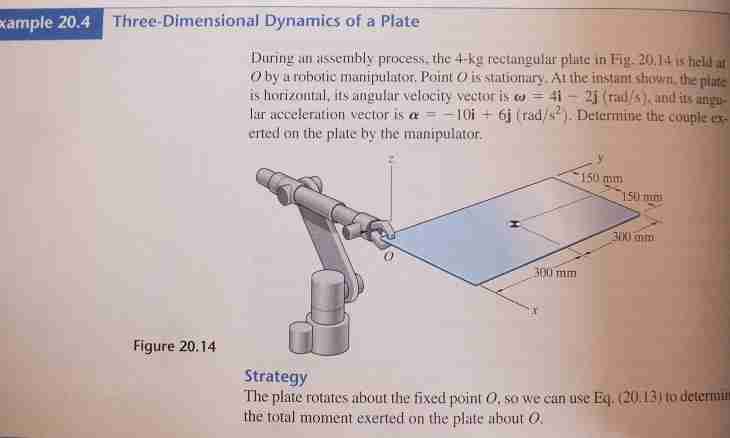The main characteristic of the moment of inertia is distribution of masses in a body. It is the scalar size which calculation depends on sizes of elementary masses and their distances to a basic set.
Instruction
1. The concept of the moment of inertia is connected with a set of the objects capable to rotate around an axis. It shows as far as these objects are inert during rotation. This size is similar to the body weight defining its inertness at progress.
2. The moment of inertia depends not only on the mass of an object, but also its situation concerning a rotation axis. It is equal to the sum of the moment of the inertia of this body relatively passing through the center of masses, and works of the weight (cross-sectional area) on a distance square between motionless and valid axes: J = J0 + S · d².
3. At a conclusion of formulas formulas of integral calculus as this size is the sequence sum an element, otherwise, the sum of a numerical row are used: J0 = ∫y²dF where dF is element cross-sectional area.
4. Let's try to remove the inertia moment for the simplest figure, for example, of a vertical rectangle concerning ordinate axis passing through the center of masses. For this purpose we will mentally break it into elementary strips dy width lasting, the equal length of a figure of a. Then: J0 = ∫y²bdy on an interval [-a/2; a/2], b is rectangle width.
5. Now let the axis of rotation passes not through the center of a rectangle, and at distance with from it and parallel to it. Then the moment of inertia will be equal to the sum of the initial moment found on the first step and the work of the weight (cross-sectional area) on with²: J = J0 + S · with².
6. As S = ∫bdy: J = ∫y²bdy + ∫c²bdy = ∫ (y² + with²) bdy.
7. Let's calculate the inertia moment for a three-dimensional figure, for example, of a sphere. In this case elements flat disks act as dh thickness. Let's make splitting perpendicular to a rotation axis. Let's count the radius of each such disk: r = √ (R² – h²).
8. The mass of such disk will be equal to p · π\· r²dh, as work of volume (dV = π\· r²dh) on density. Then the moment of inertia looks as follows: dJ = r²dm = π\· p · (R^4 – 2*R²*h² +h^4) dh, from where J = 2·∫dJ [0; R] = 2/5·m· R².

